Mercury zinc telluride (HgZnTe, MZT) is a telluride of mercury and zinc, an alloy of mercury telluride and zinc telluride. It is a narrow-gap semiconductor material.
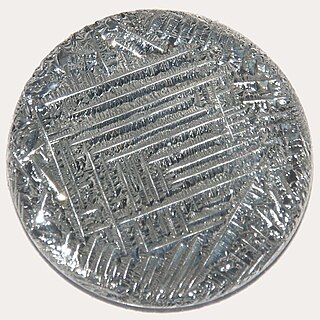
Tellurium is a chemical element with symbol Te and atomic number 52. It is a brittle, mildly toxic, rare, silver-white metalloid. Tellurium is chemically related to selenium and sulfur, all three of which are chalcogens. It is occasionally found in native form as elemental crystals. Tellurium is far more common in the Universe as a whole than on Earth. Its extreme rarity in the Earth's crust, comparable to that of platinum, is due partly its formation of a volatile hydride that caused tellurium to be lost to space as a gas during the hot nebular formation of Earth, and partly to tellurium’s low affinity for oxygen that causes it to bind preferentially to other chalcophiles in dense minerals that sink into the core.
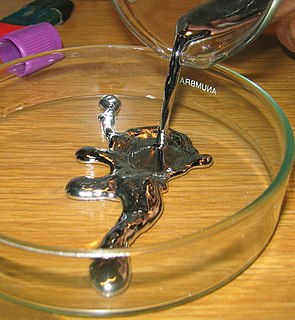
Mercury is a chemical element with symbol Hg and atomic number 80. It is commonly known as quicksilver and was formerly named hydrargyrum. A heavy, silvery d-block element, mercury is the only metallic element that is liquid at standard conditions for temperature and pressure; the only other element that is liquid under these conditions is the halogen bromine, though metals such as caesium, gallium, and rubidium melt just above room temperature.

Zinc is a chemical element with the symbol Zn and atomic number 30. Zinc is a slightly brittle metal at room temperature and has a blue-silvery appearance when oxidation is removed. It is the first element in group 12 of the periodic table. In some respects zinc is chemically similar to magnesium: both elements exhibit only one normal oxidation state (+2), and the Zn2+ and Mg2+ ions are of similar size. Zinc is the 24th most abundant element in Earth's crust and has five stable isotopes. The most common zinc ore is sphalerite (zinc blende), a zinc sulfide mineral. The largest workable lodes are in Australia, Asia, and the United States. Zinc is refined by froth flotation of the ore, roasting, and final extraction using electricity (electrowinning).
Mercury zinc telluride is used in infrared detectors and arrays for infrared imaging and infrared astronomy.

An infrared detector is a detector that reacts to infrared (IR) radiation. The two main types of detectors are thermal and photonic (photodetectors).

Infrared astronomy is the branch of astronomy and astrophysics that studies astronomical objects visible in infrared (IR) radiation. The wavelength of infrared light ranges from 0.75 to 300 micrometers. Infrared falls in between visible radiation, which ranges from 380 to 750 nanometers, and submillimeter waves.
Mercury zinc telluride has better chemical, thermal, and mechanical stability than mercury cadmium telluride. The bandgap of MZT is more sensitive to composition fluctuations than that of MCT, which may be an issue for reproducible device fabrication. MZT is less amenable than MCT to fabrication of complex heterostructures by molecular beam epitaxy.

HgCdTe or mercury cadmium telluride is an alloy of cadmium telluride (CdTe) and mercury telluride (HgTe) with a tunable bandgap spanning the shortwave infrared to the very long wave infrared regions. The amount of cadmium (Cd) in the alloy can be chosen so as to tune the optical absorption of the material to the desired infrared wavelength. CdTe is a semiconductor with a bandgap of approximately 1.5 electronvolts (eV) at room temperature. HgTe is a semimetal, which means that its bandgap energy is zero. Mixing these two substances allows one to obtain any bandgap between 0 and 1.5 eV.
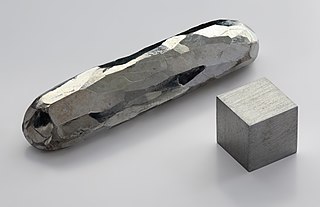
Cadmium is a chemical element with symbol Cd and atomic number 48. This soft, silvery-white metal is chemically similar to the two other stable metals in group 12, zinc and mercury. Like zinc, it demonstrates oxidation state +2 in most of its compounds, and like mercury, it has a lower melting point than the transition metals in groups 3 through 11. Cadmium and its congeners in group 12 are often not considered transition metals, in that they do not have partly filled d or f electron shells in the elemental or common oxidation states. The average concentration of cadmium in Earth's crust is between 0.1 and 0.5 parts per million (ppm). It was discovered in 1817 simultaneously by Stromeyer and Hermann, both in Germany, as an impurity in zinc carbonate.

A thermographic camera is a device that forms a heat zone image using infrared radiation, similar to a common camera that forms an image using visible light. Instead of the 400–700 nanometre range of the visible light camera, infrared cameras operate in wavelengths as long as 14,000 nm (14 µm). Their use is called thermography.

Group 12, by modern IUPAC numbering, is a group of chemical elements in the periodic table. It includes zinc (Zn), cadmium (Cd) and mercury (Hg). The further inclusion of copernicium (Cn) in group 12 is supported by recent experiments on individual copernicium atoms. Formerly this group was named IIB by CAS and old IUPAC system.

Diamond turning is turning with diamond as the cutting tool. It is a process of mechanical machining of precision elements using lathes or derivative machine tools equipped with natural or synthetic diamond-tipped tool bits. The term single-point diamond turning (SPDT) is sometimes applied, although as with other lathe work, the "single-point" label is sometimes only nominal. The process of diamond turning is widely used to manufacture high-quality aspheric optical elements from crystals, metals, acrylic, and other materials. Plastic optics are frequently molded using diamond turned mold inserts. Optical elements produced by the means of diamond turning are used in optical assemblies in telescopes, video projectors, missile guidance systems, lasers, scientific research instruments, and numerous other systems and devices. Most SPDT today is done with computer numerical control (CNC) machine tools. Diamonds also serve in other machining processes, such as milling, grinding, and honing. Diamond turned surfaces have a high specular brightness and require no additional polishing or buffing, unlike other conventionally machined surfaces
Negative luminescence is a physical phenomenon by which an electronic device emits less thermal radiation when an electric current is passed through it than it does in thermal equilibrium. When viewed by a thermal camera, an operating negative luminescent device looks colder than its environment.

Cadmium telluride (CdTe) is a stable crystalline compound formed from cadmium and tellurium. It is mainly used as the semiconducting material in cadmium telluride photovoltaics and an infrared optical window. It is usually sandwiched with cadmium sulfide to form a p-n junction solar PV cell. Typically, CdTe PV cells use a n-i-p structure.
Cadmium zinc telluride, (CdZnTe) or CZT, is a compound of cadmium, zinc and tellurium or, more strictly speaking, an alloy of cadmium telluride and zinc telluride. A direct bandgap semiconductor, it is used in a variety of applications, including semiconductor radiation detectors, photorefractive gratings, electro-optic modulators, solar cells, and terahertz generation and detection. The band gap varies from approximately 1.4 to 2.2 eV, depending on composition.
The SPRITE infrared detector is named after the process of signal integration carried out by "Signal Processing In The Element". The technique was invented at the Royal Signals and Radar Establishment at Malvern by a team of scientists including Tom Elliott.

Dimethyl telluride is an organotelluride compound, formula (CH3)2Te, also known by the abbreviation DMTe.
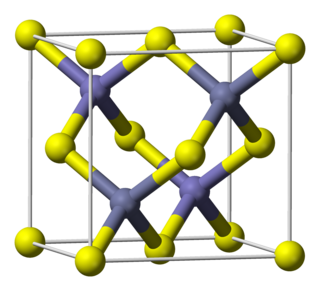
Mercury telluride (HgTe) is a binary chemical compound of mercury and tellurium. It is a semi-metal related to the II-VI group of semiconductor materials. Alternative names are mercuric telluride and mercury(II) telluride.

Mercury selenide (HgSe) is a chemical compound of mercury and selenium. It is a grey-black crystalline solid semi-metal with a sphalerite structure. The lattice constant is 0.608 nm.

Sofradir is a B2B company with headquarters in Châtenay-Malabry, France that designs and manufactures infrared (IR) detectors for military, space and commercial applications. The company’s shareholders are Thales, Sagem and Areva. Sofradir designs and manufactures cooled IR detector products that are based on Mercury Cadmium Telluride materials. MCT is considered a very high performance infrared technology. Sofradir also produces other detector technologies, including quantum well infrared photodetectors (QWIP) and uncooled microbolometer detectors.
The Cadmium Zinc Telluride 0-Neutrino Double-Beta (COBRA) experiment is a large array of cadmium zinc telluride (CdZnTe) semiconductors searching for evidence of neutrinoless double beta decay and to measure its half life. COBRA is located underground, within the Gran Sasso National Laboratory. The experiment was proposed in 2001, and installation of a large prototype began in 2006.
Lead tin telluride, also referred to as PbSnTe or Pb1−xSnxTe, is a ternary alloy of lead, tin and tellurium, generally made by alloying either tin into lead telluride or lead into tin telluride. It is a IV-VI narrow band gap semiconductor material.
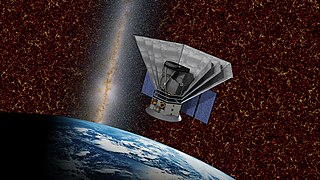
SPHEREx is a future near-infrared space observatory that will perform an all-sky survey to measure the near-infrared spectra of approximately 450 million galaxies. In February 2019, SPHEREx was selected by NASA for its next Medium-Class Explorers mission, beating out two competing mission concepts: Arcus and FINESSE. As of 2019, SPHEREx is targeted to launch in 2023. The Principal Investigator is James Bock at Caltech in Pasadena, California.













